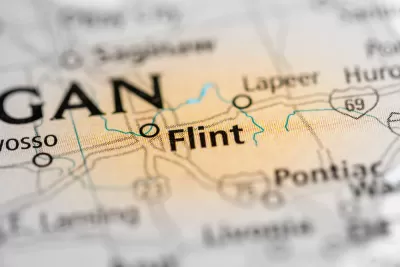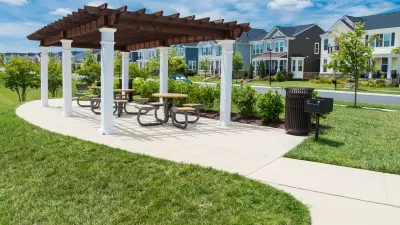The community's hard work has helped Flint planners take an inventory of its building stock, as well as secure needed funding from the federal government.

Scott Atkinson reports on a unique participatory planning process that helped the city of Flint with some of the hard work necessary for a master planning process launched in 2012, and has since helped the city secure funding from the federal Hardest Hit fund.
The key to the story has been community participation in a neighborhood inventory process, that helped not only identify the city's existing development strengths and weaknesses, but also helped take the message about the master plan and build trust for planning among the community.
"That first year, 2012, community-based groups inventoried the balance of residential properties" not yet inventoried by city planners, according to Atkinson.
In 2013, residents hit the streets again, this time taking inventory of the city’s commercial properties. In 2014, they updated their residential data and documented the state of the city’s streetlights. In 2015, they took inventory on sidewalks. In 2016, they turned to residential again (an every other year project), and in 2017, residential and commercial properties.
Those inventories have also been integral to helping the Genesee County Land Bank and the city of Flint secure $20.1 million from "the federal Hardest Hit Fund, a program that helps communities struggling with high foreclosure rates." According to Atkinson, "[a]s of July, Flint has received a total of about $67.5 million in Hardest Hit money. About half of that has been spent so far, resulting in the demolition of 2,248 structures."
This article is the fourth in a five-story series on resident-led revitalization efforts in Flint, Michigan.
FULL STORY: Flint mapping makes city planning a team effort

Montreal Mall to Become 6,000 Housing Units
Place Versailles will be transformed into a mixed-use complex over the next 25 years.

Planetizen Federal Action Tracker
A weekly monitor of how Trump’s orders and actions are impacting planners and planning in America.

DARTSpace Platform Streamlines Dallas TOD Application Process
The Dallas transit agency hopes a shorter permitting timeline will boost transit-oriented development around rail stations.

Dead End: Nine Highways Ready for Retirement
The Freeways Without Futures report describes the nation’s most promising highway removal proposals.

Congressman Proposes Bill to Rename DC Metro “Trump Train”
The Make Autorail Great Again Act would withhold federal funding to the system until the Washington Metropolitan Area Transit Authority (WMATA), rebrands as the Washington Metropolitan Authority for Greater Access (WMAGA).

Trump's “Able Bodied” Public Housing Limits Could Displace Over 300,000 New Yorkers
As part of 43% cut to federal rental assistance, Trump is proposing a two-year limit on public housing tenure for “able bodied adults.”
Urban Design for Planners 1: Software Tools
This six-course series explores essential urban design concepts using open source software and equips planners with the tools they need to participate fully in the urban design process.
Planning for Universal Design
Learn the tools for implementing Universal Design in planning regulations.
City of Mt Shasta
City of Camden Redevelopment Agency
City of Astoria
Transportation Research & Education Center (TREC) at Portland State University
City of Camden Redevelopment Agency
Municipality of Princeton (NJ)
Regional Transportation Commission of Southern Nevada





























